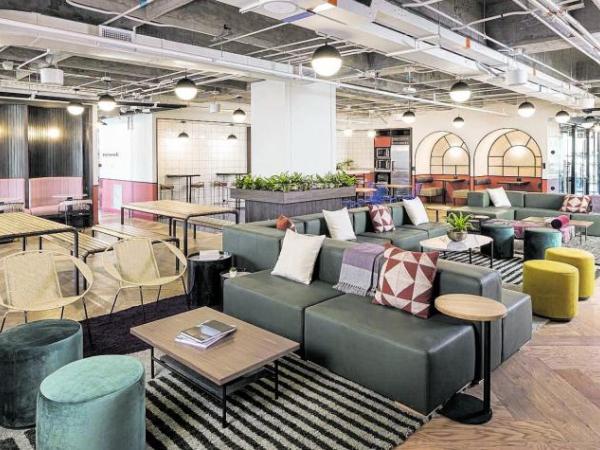With the start of the pandemic in 2020, several sectors were paralyzed, including construction. But nevertheless, the adaptation of companies has allowed office spaces to be transform by changing work dynamics.
(Read: Perception of legal certainty in construction).
Andres Cardona, Vice President CBREColombia, a company dedicated to real estate services, assures that one of the expected consequences of the pandemic was vacancy in offices, but the market has shown a constant demand.
“We thought that we were going to enter this year with a market oversupply of offices due to all the vacancy we had and we were going to have a negative absorption, but at the same time many square meters were occupied; Last year, nearly 95,000 square meters of offices were occupied, which led us to start the year with positive numbers”, Cardona said.
These expectations of unemployment at the beginning of the economic recovery period they were high for the market due to the panic of the different sectors in the pandemic “the developers were scared by what was happening, they canceled the office projects, the banks restricted the lines of credit due to the whole situation thinking that the offices were going to finish, and today we are going to have a period of time where the demand continues,” he said.
in that period of time companies entered into adaptation processesamong them, the offices have changed the scenery to the workers’ houses and now these physical spaces of the companies are considered places of recreation.
(Read: 36% of companies emerged in pandemic).
In estimates, this year it is expected to reach 130,000 square meters. However, due to the uncertainty of the companies about the new model of alternation at work, the way to operate is still being analyzed. And it is that previously a workplace was determined for each employee, in the new model, it could reach a workspace for every two employees.
“The offices are becoming a place to socialize, to create, to debate and share and to be connected with the values of the company, We are no longer going to be in a job to answer emails when we can perfectly do it from our homes, but rather the space changes and the destination of the office changes” Cordoba said.
Similarly, logistics spaces had to be expanded due to the increase in digital commerce. “Previously, we had industrial parks that were developed by speculation and developed very small warehouses of 2,000 meters, and had many warehouses of 2,000 meters, today the big players are between 20,000 and 100,000 square meters. The adaptation is developing large logistics spaces, it is very difficult for someone to build a ship with all the specifications of the client”, he added.
In this way, during this year the growing dynamics of Larger-scale office occupancy will start to decline due to the low supply in the different business centers of the country. In contrast, the spaces of less than 2,000 square meters will have a greater offer.
(Read: 40% of Cemex Colombia’s sales are for self-construction).
PREMIUM OFFICES
On the other hand, premium offices, according to a study by Cushman & Wakefielda global corporate real estate services company, forecast growth in the industry “In the first half of 2022, 83,000 square meters are expected to enter the market in areas such as Salitre, Chicó, Nogal Andino and Santa Bárbara,” said Juan Carlos Delgado, country manager of the company.
In addition, among the possibilities, the corporation considers that this new year will bring a panorama where the social and political dynamics derived from the presidential and legislative elections will be important, also taking into account the GDP projections of the Banco de la República, standing at 9 .7% for the end of the year.
Faced with the end of 2021, the company showed 1.2% vacancy reduction compared to the previous quarter, as well as a 1% recovery in the recovered price of the value per square meter, closing on average with $72,041 per m2, explained by the release of offices in the submarkets Av. Chile (2%) and Calle 100 (2 %).
For this new year, and in line with the economic reactivation of the country, Delgado assured that the intention will continue to maintain the return to the offices not only of the owners of the companies, but of the same collaborators who “are inclined to recover in safe spaces, the interaction and the consolidation of the corporate culture”, he indicated.
(Read: Government of the Valley asks to finish the Buga-Buenaventura road).
In this way, it will be shown restructuring of large office spaces in terms of design and distribution of space.
An additional factor to take into account about this new direction of companies is the expansion of transport, as is the case in Bogotá, where experts expect a decentralization of the development of usual financial centers to offer employees places of work not where they have always been. state, but can be located in other parts of the city.
PAULA GALEANO BALAGUERA
BRIEFCASE















